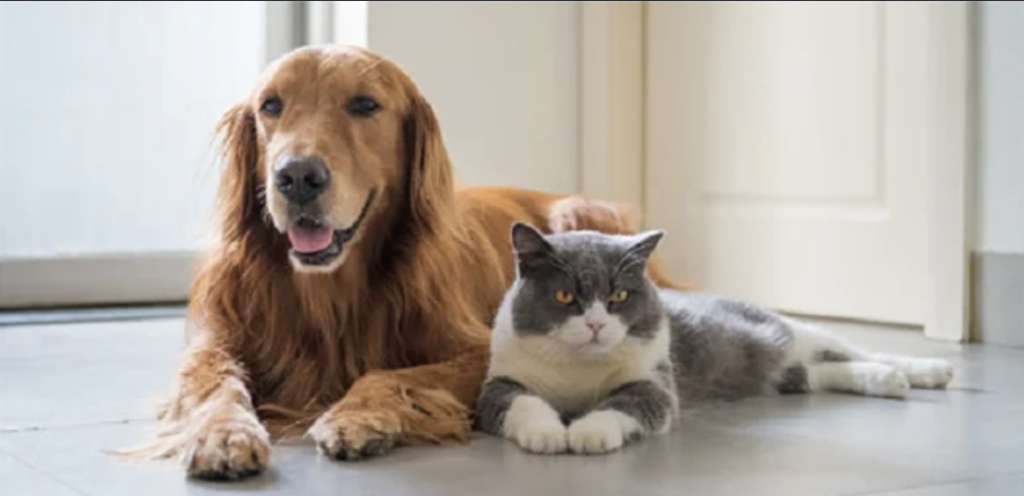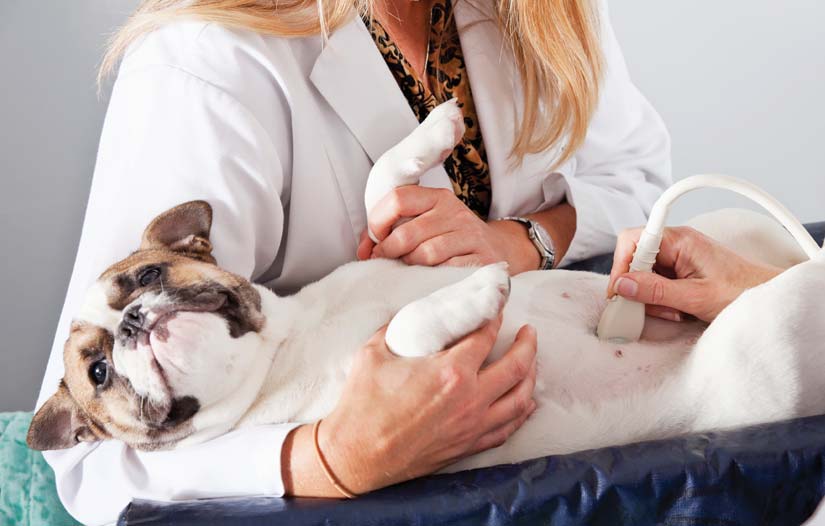Table of Contents
ToggleHow to Stay Safe When Raising Pets in Your Family: Essential Tips for a Healthy Home
Raising pets in your family can be an incredibly rewarding experience. They provide companionship, love, and loyalty, becoming integral members of your household. However, while the joys of having pets are numerous, it’s essential to recognize the importance of maintaining a safe and healthy environment for both your family and your pets. This involves addressing potential hazards, knowing how to handle animals appropriately, and ensuring that your home is a safe space for both human and animal members. In this article, we will discuss practical ways to stay safe when raising pets in your family, from preventing injuries to protecting everyone from health risks.
1. Proper Pet Hygiene and Regular Vet Visits

Maintaining a clean and healthy environment for your pets is a key factor in ensuring both their safety and the safety of your family. Regular grooming, cleaning, and veterinary visits are crucial steps in keeping pets healthy and preventing diseases that could be transmitted to humans.
Regular Grooming
Frequent grooming not only keeps pets looking good but also promotes their health. Regular brushing helps remove loose fur, dirt, and debris, reducing the risk of skin infections. It also allows you to check for parasites like fleas, ticks, or mites, which could pose health risks to both pets and family members.
Veterinary Care
Routine vet visits ensure that your pets are up-to-date on vaccinations, flea and tick treatments, and deworming. Many zoonotic diseases, such as rabies, toxoplasmosis, and Lyme disease, can be prevented through vaccinations and preventive medications. Keeping a regular schedule for veterinary visits helps detect any potential health issues early, minimizing risks to your family.
Proper Waste Disposal
Cleaning up after your pets is essential to prevent the spread of diseases and maintain a hygienic environment. Ensure you clean your pet’s litter box or waste areas regularly and dispose of waste properly. This will prevent contamination of your home and reduce the risk of harmful bacteria spreading.
2. Preventing Pet Bites and Scratches
Whether it’s a playful nip or an accidental scratch, pet bites and scratches are a common hazard in households with animals. These injuries can lead to infections, allergic reactions, or more serious complications, especially in children. Here’s how to minimize these risks:
Educate Your Family on Proper Pet Interaction
Teach your family members, particularly young children, how to approach and interact with pets. Encourage gentle handling and discourage rough play or sudden movements that may startle the animal. It’s important that everyone in the household understands the signs of an animal feeling threatened, such as growling, baring teeth, or backing away.
Train Your Pets
Pet training is an essential part of raising a well-behaved animal that can coexist safely with family members. Obedience training for dogs, for example, can prevent biting incidents and encourage positive behavior. Socializing pets, especially dogs, from a young age helps them become accustomed to different environments and people, reducing fear-based aggression.
First Aid for Bites and Scratches
Accidents can happen, even when precautions are taken. It’s essential to have a basic understanding of first aid in case of pet bites or scratches. Clean the wound thoroughly with soap and water, apply antiseptic, and seek medical attention if necessary. For more serious injuries, especially from cats or unvaccinated pets, it’s important to consult with a healthcare professional promptly.
3. Preventing Allergies and Respiratory Issues
Pet allergies and respiratory issues are common concerns for families, especially when raising pets like cats, dogs, and rabbits, whose fur and dander can trigger allergic reactions. Keeping allergies and respiratory problems under control is key to maintaining a safe home environment.
Minimize Allergen Exposure
If someone in the household has pet allergies, there are several strategies to reduce allergen exposure. First, choose hypoallergenic breeds or species that produce fewer allergens. For example, certain dog breeds like Poodles or Schnauzers tend to shed less dander than other breeds.
Keep your pets out of bedrooms, and limit their access to furniture to minimize allergens in sleeping areas. Invest in high-quality air purifiers that can filter pet dander, dust, and other airborne particles.
Regular Cleaning and Ventilation
Maintaining a clean home is crucial to reducing allergens. Vacuum carpets, rugs, and furniture regularly, preferably with a vacuum cleaner equipped with a HEPA filter, which can trap tiny particles of dander. Wash your pet’s bedding and toys frequently, and ensure your home is well-ventilated to reduce allergens in the air.
Check for Respiratory Issues
Pets can also develop respiratory issues, especially in households with multiple animals. Monitor your pets for signs of allergies or respiratory distress, such as coughing, sneezing, or wheezing. If you notice any of these symptoms, it’s important to seek veterinary care to ensure your pet’s health and minimize any potential risk to your family.
4. Safe Feeding Practices
The food your pet consumes plays a significant role in its overall health and well-being, and improper feeding can lead to health issues that could affect your family’s safety. Additionally, certain human foods can be toxic to pets, and it’s important to ensure that pets only consume food intended for their species.
Safe Feeding Practices

Ensure your pets are fed according to their specific dietary needs, and avoid overfeeding, which can lead to obesity and other health complications. Store pet food in a secure, airtight container to keep it fresh and safe from pests.
Prevent Access to Human Food
Many human foods are toxic to pets. Chocolate, grapes, onions, garlic, and alcohol are just a few examples of substances that can be dangerous or even fatal to animals. Keep these foods out of reach of your pets, and educate your family on the importance of not feeding pets table scraps or human food.
Be Cautious with Pet Treats
While pet treats can be an enjoyable reward, make sure they are safe and appropriate for your pet’s size and breed. Some treats may be choking hazards, while others may contain ingredients that could cause allergies or digestive issues. Always read the label and choose treats that support your pet’s health.
5. Pet-Proofing Your Home
Just as you would baby-proof your home for a new child, it’s essential to pet-proof your living space to protect both your pets and family members. Pets, especially curious puppies or kittens, can get into all kinds of trouble, so taking a few preventive measures can avoid dangerous situations.
Keep Hazardous Items Out of Reach
Store household cleaners, medications, and other potentially harmful substances in cabinets that are securely closed and out of reach of your pets. Pets may chew on electrical cords, swallow small objects, or get into dangerous chemicals if not properly contained.
Secure the Yard
If you have a yard, make sure it’s securely fenced to prevent your pets from running off and getting into potential hazards, such as traffic or wild animals. Ensure the fence is tall enough and that there are no gaps that pets could squeeze through.
Pet-Friendly Furniture
Choose furniture and décor that can withstand the wear and tear of pets. Opt for materials that are easy to clean and resistant to scratches. If you have cats, consider providing scratching posts or pads to prevent damage to furniture.
6. Socializing and Supervising Pets
Socialization and supervision are essential for ensuring safe interactions between pets, family members, and other animals. Socializing pets from a young age helps them develop proper behavior and reduces the risk of aggression or anxiety.
Supervise Playtime
Always supervise interactions between pets and young children. Even well-behaved pets can become startled or overwhelmed, leading to unintentional biting or scratching. Supervision helps maintain a safe environment for both pets and children.
Encourage Positive Social Interactions
Socialize your pets by introducing them to various people, animals, and environments. This helps them develop appropriate social skills and reduces the likelihood of fear-based reactions that could lead to biting or anxiety.
7. Creating a Pet Emergency Plan
Accidents and emergencies can happen at any time, so it’s important to be prepared. Having a pet emergency plan in place can help you respond quickly and effectively to any situation that arises.
Know Emergency Contact Information
Keep the contact information for your veterinarian, local animal shelters, and emergency pet clinics readily available. Familiarize yourself with the first aid techniques for both pets and humans in case of an emergency.
Prepare for Natural Disasters
If you live in an area prone to natural disasters such as hurricanes, earthquakes, or floods, ensure you have an emergency kit that includes pet essentials like food, water, medications, and a carrier for evacuation.
Conclusion
Raising pets in your family can bring immense joy and fulfillment, but it’s important to prioritize safety to ensure the well-being of both your pets and family members. By maintaining proper hygiene, preventing bites and scratches, safeguarding against allergies, feeding safely, pet-proofing your home, and socializing pets, you can create a safe, healthy environment where everyone can thrive. With these essential tips, you can enjoy the many rewards of raising pets while keeping your family safe and secure.

